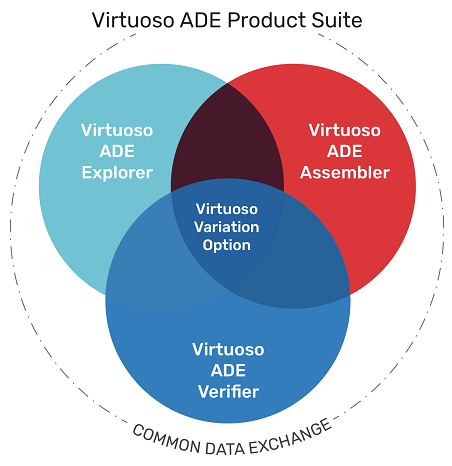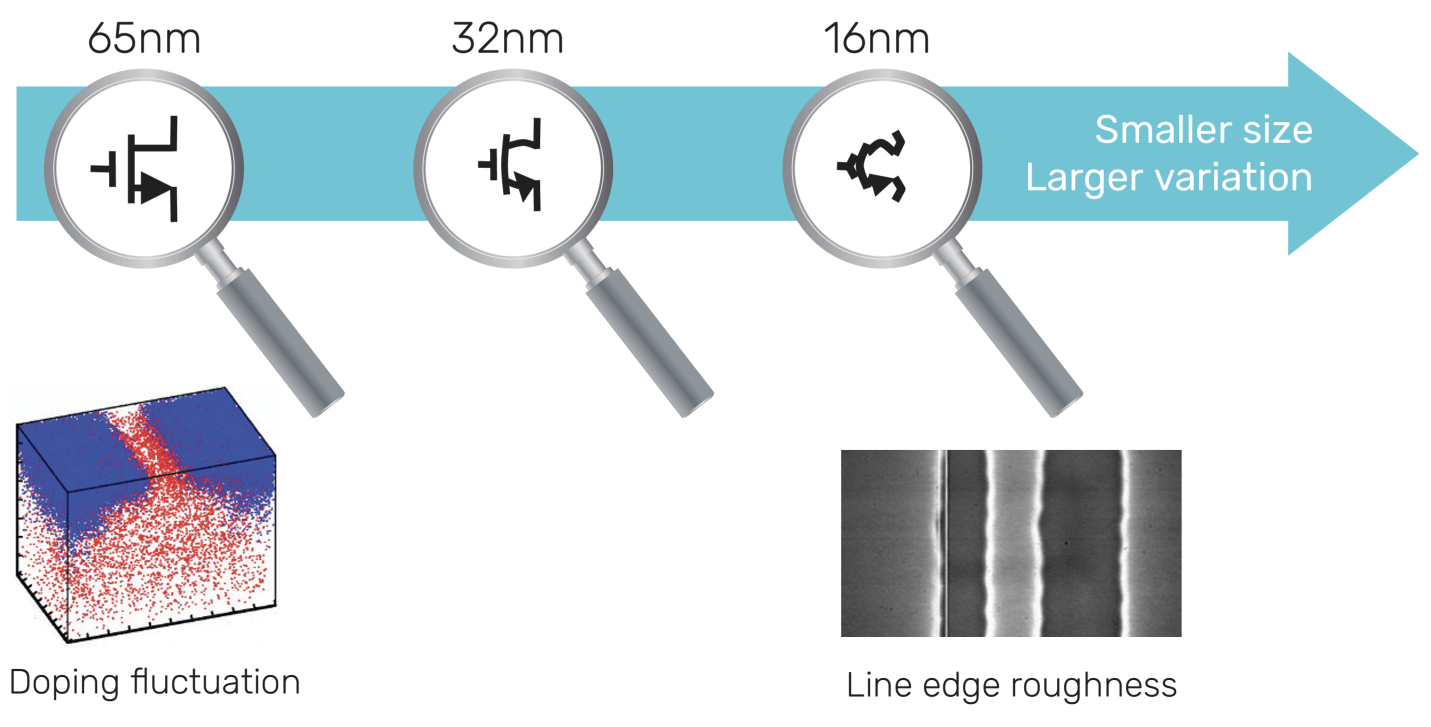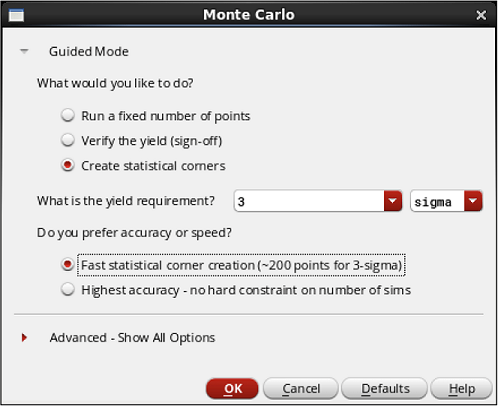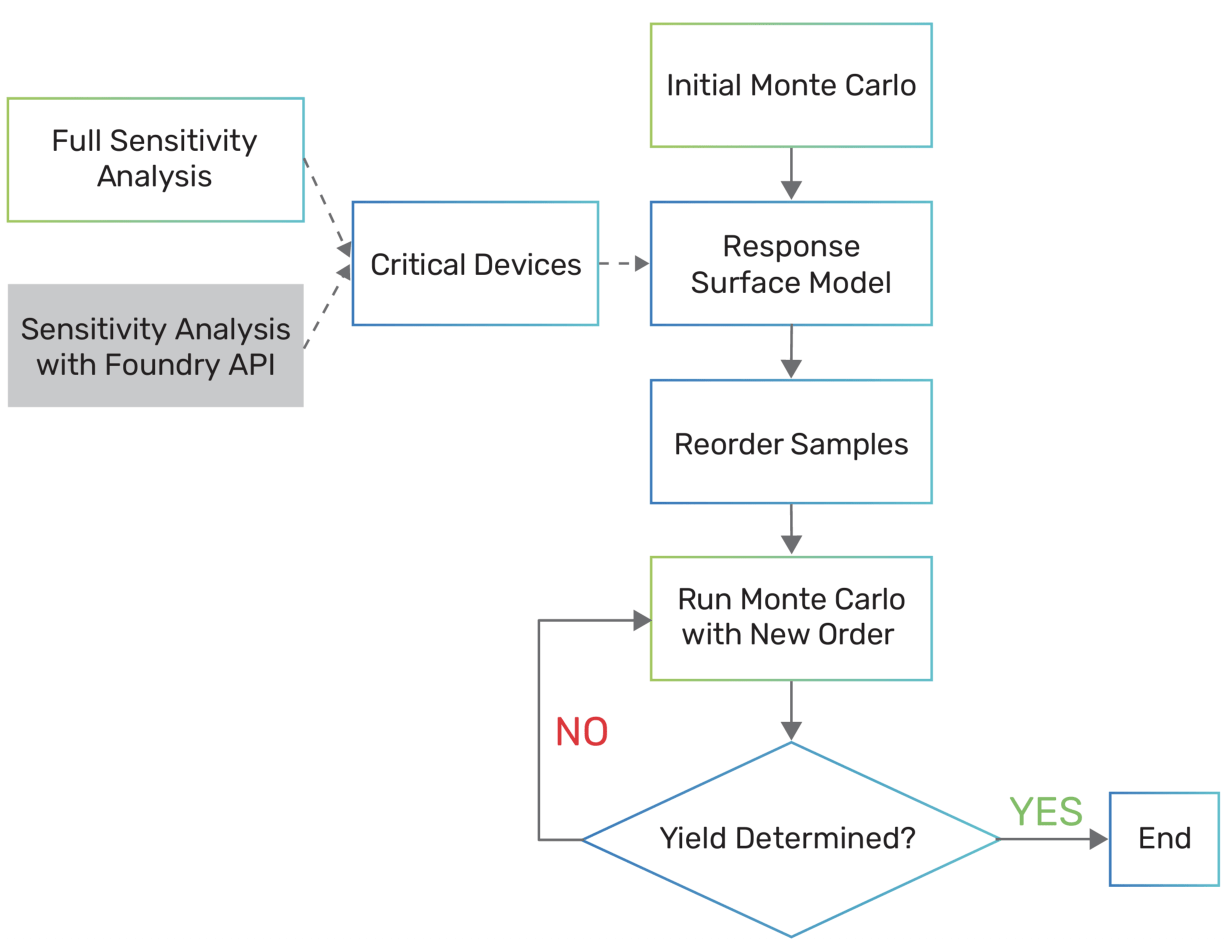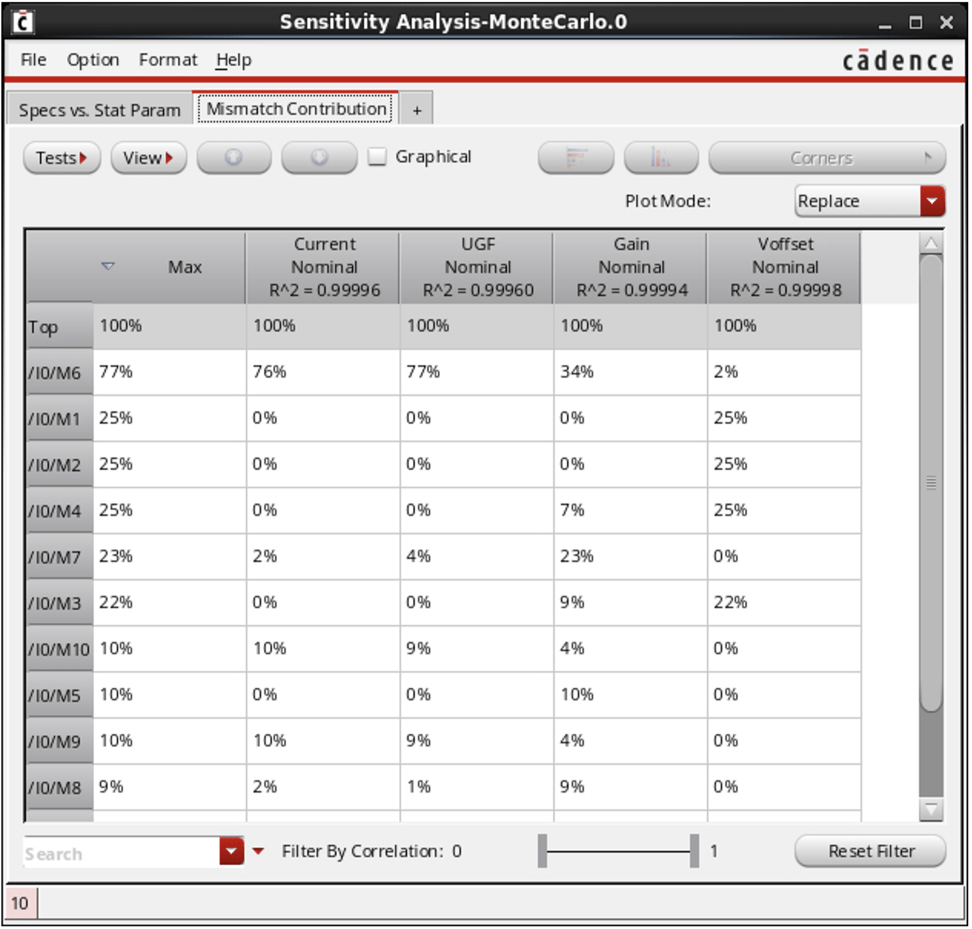The Cadence® Virtuoso® Variation Option extends the statistical variation capabilities of the Virtuoso ADE Assembler and Virtuoso ADE Verifier to allow for more sophisticated analyses, and is especially well suited for advanced-node designs and designs requiring high-sigma validation.
Introduction to Virtuoso ADE Product Suite
The Cadence® Virtuoso® Variation Option extends the statistical variation capabilities of the Virtuoso ADE Assembler and Virtuoso ADE Verifier to allow for more sophisticated analyses, and is especially well suited for advanced-node designs and designs requiring high-sigma validation.
The new Virtuoso ADE product suite enables designers to fully explore, analyze, and verify a design against design goals so that they can maintain design intent throughout the design cycle. As the industry’s leading solution for analog simulation control and management, the Virtuoso ADE product suite allows users to flexibly select the product(s) that best support their design goals as they move through the design flow.
The Virtuoso ADE Explorer provides a quick entry into the analysis process with easy execution of simulations, including support for running Monte Carlo statistics, corner sweeps, pass/fail analysis, and real-time tuning with the Cadence Spectre® Simulation Platform.
The Virtuoso ADE Assembler extends the Virtuoso ADE Explorer’s capabilities across multiple testbenches simultaneously, allowing the user to monitor all aspects of the larger analog block they are creating by enabling easy and direct review of all results and generating specification-comparison sheets and datasheets as needed. The Virtuoso ADE Assembler also contains targeted features for parasitic analysis, design migration with parameter re-centering, and worst-case corner development to simplify variation analysis tasks.
To handle the key challenges of advanced-node or high-sigma designs, the Virtuoso Variation Option enables fast Monte Carlo analysis for FinFETs, high-yield estimation, and yield-improvement flows.
Finally, the Virtuoso ADE Assembler and Virtuoso ADE Explorer supply information to the Virtuoso ADE Verifier, which is designed to match the highest level circuit specifications with individual analysis tests being developed by different users or design sites. Because status is managed in one location, as shown in Figure 1, circuit architects know the complete status of the design at all times.
Virtuoso Variation Option Overview
The Virtuoso Variation Option supports extensive statistical exploration of your analog or RF design or custom digital design. Designed to work with the tests and specifications set up inside the Virtuoso ADE Explorer and Virtuoso ADE Assembler, it extends the native statistical capabilities of the tool into areas where more advanced analyses are required.
Benefits
Features
Task-driven user interface
Designing for yield traditionally involves repeatedly tuning your design and running Monte Carlo simulations. This method is very time-consuming and can easily lead to under-design or over-design if the number of Monte Carlo samples is not specified correctly. A much more efficient flow is to first create statistical corners that represent your circuit’s worst-case conditions, then design against these corners, and finally verify the yield. With the task-driven user interface, you only need to specify the task (verify the yield or create statistical corners) and your yield requirement, and the most appropriate algorithm that provides orders of magnitude speedup against traditional methods will be automatically set up.
Efficient 3-sigma analysis
The widespread adoption of FinFET technology at 16nm and below presents a new set of challenges for variation analyses, as shown in Figure 2.
These challenges impose significant risk on the design specifications if they are not properly analyzed both before and after the physical implementation. However, the number of statistical simulations required, coupled with the number of transistors typically present in this type of design, makes traditional brute-force methods to calculate statistical variance impractical. Two algorithms are provided for fast, accurate 3-sigma analysis.
The first algorithm creates 3-sigma corners quickly, requiring a maximum of only 200 Monte Carlo samples. For strongly linear outputs, only 50 points may be needed to fit the model (by comparison, brute-force Monte Carlo analysis generally requires 2,000 samples). Choose the fast statistical corner algorithm if you have a firm simulation budget, which creates corners as accurately as possible within the budget.
The second algorithm applies Monte Carlo reordering to speed the analysis process without accuracy loss. By working with leading foundries, this flow is even more efficient for FinFETs by calling foundry-provided APIs to speed up analysis, as shown in Figure 4. The sample reordering algorithm is available for both yield verification and creating corners.
High-yield estimation for 4-, 5-, or 6-sigma analysis
Parametric high-yield estimation is often required on devices that have extremely high volume (i.e., memory devices) or when testing the circuit limits is a must when failure of the part is not an option (i.e., automotive safety or medical devices). But a 6-sigma means testing to determine that the circuit failures are less than 2 parts-per-billion or 99.9999998%, rendering traditional Monte Carlo analysis completely impractical.
Two methods are provided to our users and are chosen depending on the conditions that the circuit is being tested under:
Mismatch contribution analysis
Mismatch contribution analysis is a Monte Carlo post-processing feature that helps in identifying the important contributors to mismatch variation. You can then modify the identified devices in the schematic (Figure 5) and make the design less sensitive to mismatch variation. You can apply this method to existing standard Monte Carlo results or use the Sensitivity Accuracy method to automatically run the minimum required number of points.
